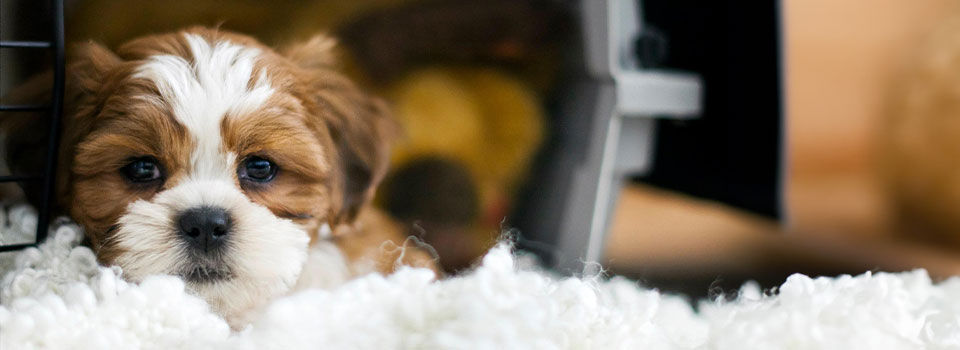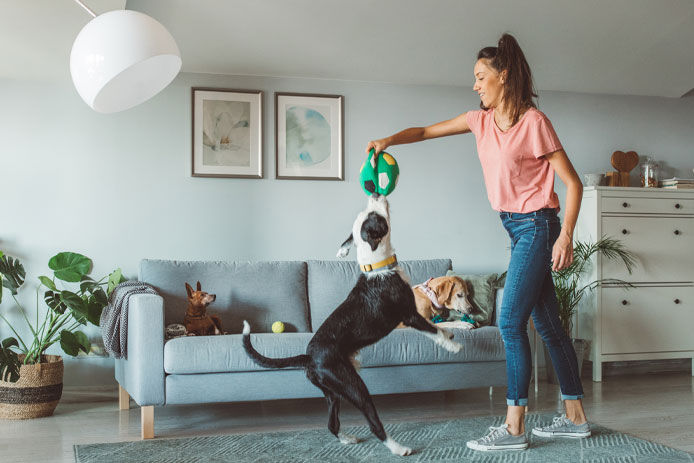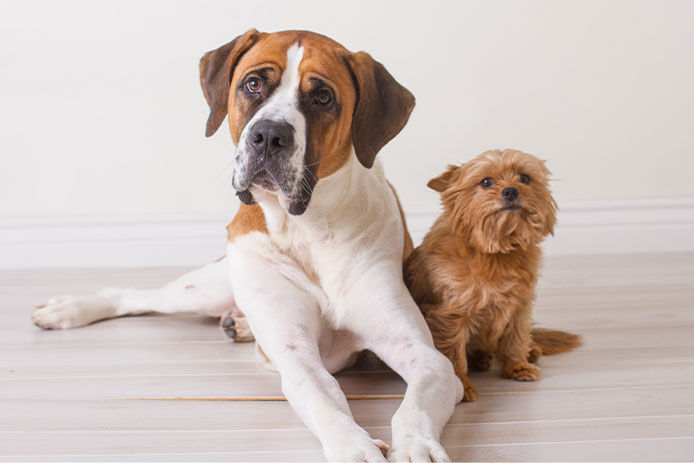While do-it-yourself projects can be fun and fulfilling, there is always a potential for personal injury or property damage. We strongly suggest that any project beyond your abilities be left to licensed professionals such as electricians, plumbers, and carpenters. Any action you take upon the information on this website is strictly at your own risk, and we assume no responsibility or liability for the contents of this article.
Tips for Teaching Your Dog to Enjoy Its Kennel

If you are a proud dog parent, you undoubtedly recognize that while your furry pal is the perfect companion for most adventures, your pup sometimes might need to take a break in a safe, enclosed space. For this reason, dog kennels or crates are often utilized as a place for dogs to spend some much-needed downtime, as well as a helpful training tool while a dog is getting used to spending time alone in your house.
However, while purchasing a kennel is simple, getting your dog to enjoy spending time in its kennel isn’t always quite that easy. In some cases, the simple sight of a dog crate will send your pup into the furthest corners of your home.
The good news is that with a few quality tips in your back pocket, you can make crate time a “pawsitive” experience for your furry pal. Check out the following dos and don’ts of crate time.
Don’t Associate It With Punishment

First and foremost, the worst thing you can do when introducing a kennel into your dog’s life is to associate it with punishment. If Fido just peed on your carpet, sending him to his crate as a punishment will cause him to view that space as a negative experience.
While our pups can challenge our patience with their antics, always keep your cool and choose your reaction to the situation wisely. Focus on improved training opportunities, rather than sending your dog to a kennel and simply locking him away.
Additionally, if you adopted your dog, recognize that they might associate crate time with their previous owner’s punishment tactics or with being locked up at the pound. This will take time to unlearn.
Stockpile the Space With Safe Treats

The flip side of not associating a kennel with punishment is to instead make the time in the crate a fun experience. Stockpile the space with treats and toys that you can safely leave your dog alone with (never leave your dog in a crate with a treat that could cause choking, such as rawhides).
As you start to introduce your dog to their kennel, choose special treats and toys that will only be given to your dog during crate time. This can help to make the experience something that your pup looks forward to, rather than dreads.
Lower Surrounding Stimulus

For many dogs, their kennels end up becoming a safe place where they feel comfortable and relaxed. Usually, this is because the kennel offers lowered stimuli. If you purchased a crate that features open walls and ceilings, cover the kennel with a blanket to create a calm and stimuli-free area.
Additionally, make sure the kennel is located in a quiet part of your home. It will be hard for your dog to relax in its kennel if you have it placed near a window where dogs and cats are passing by or in an area of your home where people will be coming and going. The less stimuli your dog is exposed to, the easier it will be for it to settle down and rest.
Be Mindful of Length of Time

One of the most important things to consider when utilizing a kennel with your dog is the amount of time you plan to leave your pet in this small space. While a crate can be an excellent way to help keep your home protected against destructive energy, a dog can only handle so much time locked away in this confined space. If your dog is left for extended periods of time alone in their kennel, it can begin to associate it with anxiety, rather than calm. This is particularly true for dogs who are adopted. They may have spent the majority of their previous life locked away.
According to the Humane Society, puppies and dogs who are being house trained should never be left in their crate for more than three to four hours at a time. During this stage, they simply cannot control their bladders or bowels for long periods of time.
Think of it from your own perspective. How much time would you want to spend in the smallest room in your house without access to a bathroom? Dogs need lots of exercise, time spent with their family, and exploration of their world. A crate can be a useful tool for training a dog, but it should never act as the primary place a dog spends its life.
Pick the Right Size Crate

Finally, another key to ensuring your dog doesn’t despise its kennel or crate is to pick the proper size for your dog. Your dog should be able to stand up and turn around in the space. If you have a puppy, consider choosing a crate size that will match your dog’s needs as it grows.
If you are using the crate to house train your dog, you don’t want the space to be too large, as this will allow your dog to use one side of the crate as its bathroom. Remember, if you are house training your dog with a crate, never force it into the terrible choice of soiling the space it is stuck in. Be sure you take your dog out frequently or hire a pet sitter to stop by if you need to be gone for a longer period of time.
Crates and kennels can be a treasured space, especially for nervous or high-energy dogs who need a calm and quiet space to relax. By creating a good experience for your dog, you can help your pup learn to love its time in the kennel.